12 dicembre, Centro Congressi Frentani, via dei Frentani 4, Roma
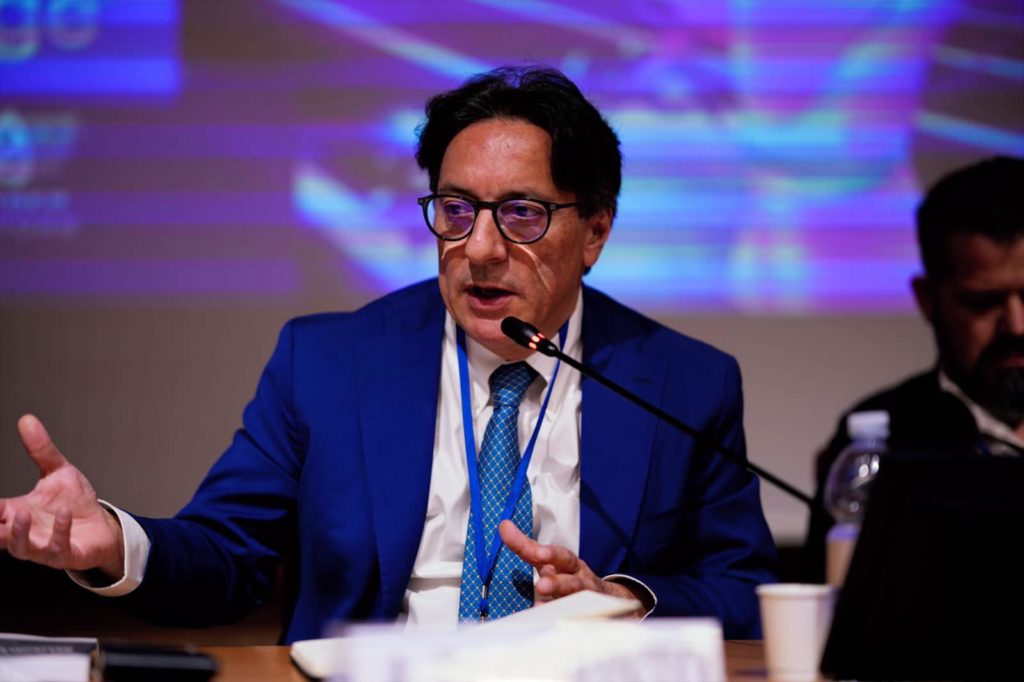
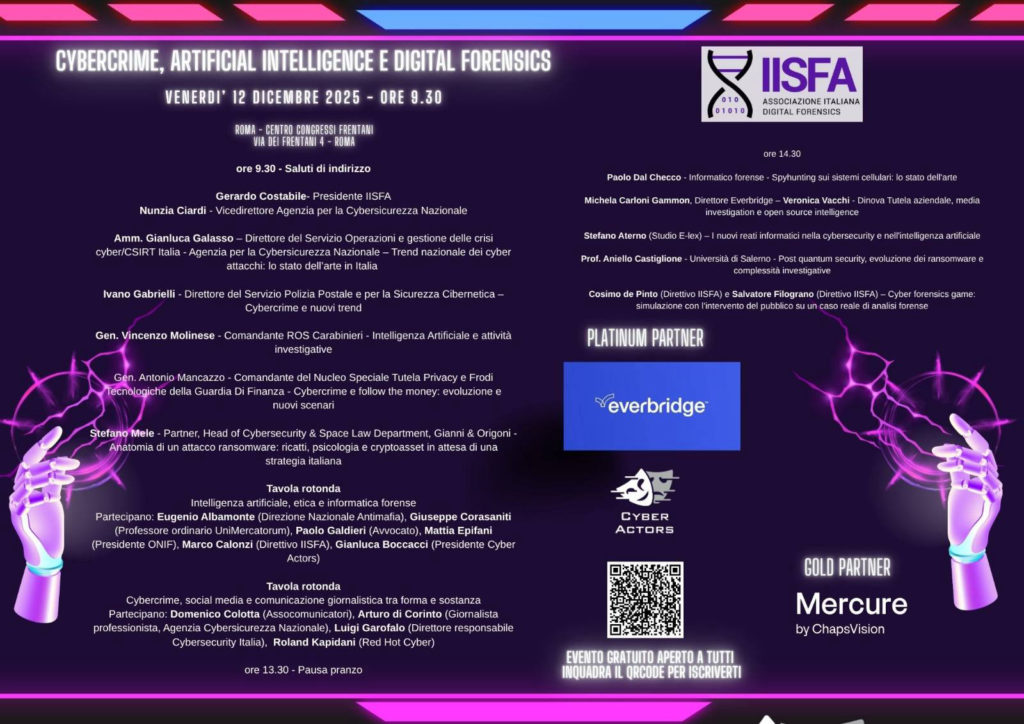
Qualsiasi risorsa che descrive un evento temporale, con una durata (data e ora di inizio e data e ora di fine). Eventi specifici (corsi, conferenze ecc.) andrebbero inseriti come sottocategorie di questa. È fondamentale specificarne la durata nell’apposito campo, sotto al testo descrittivo dell’evento.
12 dicembre, Centro Congressi Frentani, via dei Frentani 4, Roma


28 novembre, Novara, 12:30 INTERNET BENE COMUNE
https://www.isoc.it/Novara-25th-IsocIT
Chi decide cosa può (o non può) accadere nella rete?
Modera: Antonio Baldassarra, CEO Seeweb e DHH
Nicola Blefari Melazzi,
Ingegnere delle telecomunicazioni, professore ordinario presso l’Università di Roma Tor Vergata, Presidente CNIT, Presidente Fondazione RESTART
Arturo Di Corinto,
Ricercatore Sapienza Università di Roma, Consigliere ACN
Guido Scorza,
Avvocato, giornalista e professore a contratto di diritto delle nuove tecnologie e privacy. Componente del Collegio del Garante per la protezione dei dati personali
Arturo Di Corinto: Sovranità digitale, guerre algoritmiche e rischio cibernetico
“La sovranità digitale e le principali minacce al cyberspazio nazionale”
20 giugno 2025, Global Risk Forum, Milano
Dott. Arturo Di Corinto, Sapienza, Università di Roma; Consigliere dell’Agenzia per la cybersicurezza nazionale
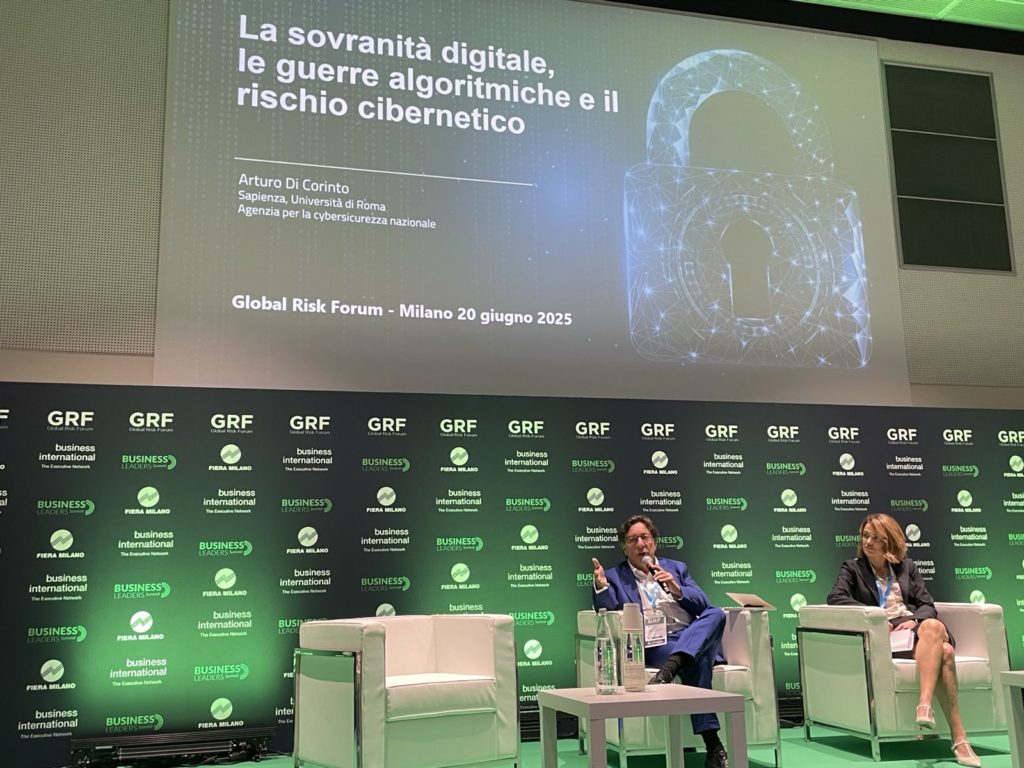
Il Global Risk Forum ha l’obiettivo di comprendere in che modo i rischi emergenti, legati al complesso scenario in cui operano le imprese, influenzano le strategie di business e come un robusto sistema di risk management aiuta imprese e board a rimanere competitive e reattive sul mercato.
L’evento è parte del Milan Business Leaders Summit che riunisce in due giorni le figure chiave del business ed i C-Level per approfondire quest’anno l’affascinante tema del tempo, elemento chiave per l’uomo, che guida le trasformazioni e determina il successo nel panorama competitivo globale.
L’edizione 2025 del Global Risk Forum “RE-SETTING THE RISK AGENDA” affronta la necessità di ridefinire costantemente le priorità dei Risk Manager per anticipare i rischi e assicurare il raggiungimento degli obiettivi strategici e operativi di business, in un contesto in cui le sfide dei fattori demografici e socioeconomici, del cambiamento climatico, delle nuove tecnologie e della cybersecurity, combinate con l’incertezza geopolitica, impongono più che mai alle organizzazioni di essere “KEEPING TIME”!
Presentazione e discussione del libro di Michele Mezza
Lunedì 24 febbraio a Roma, in Via della Dogana Vecchia 5, alle ore 17:30, la presentazione, organizzata da Fondazione Basso e CRS, del libro di Michele Mezza (Donzelli Editore).
Ne parlano con l’autore: Franco Ippolito, Giulio De Petra, Arturo Di Corinto, Carola Frediani, Roberto Natale, Norberto Patrignani.
Qui la scheda del libro sul sito dell’editore
È possibile seguire l’incontro anche collegandosi tramite il seguente link:
https://us02web.zoom.us/j/83052658139
Un trillo ai dispositivi digitali in Libano ha colpito al cuore la società digitale, proiettandola in una permanente zona d’ombra dove spettri e individui si cercano per ingannarsi, o per uccidersi, individualmente, estraendo dalla folla un volto, oppure colpendo un’intera comunità, decimando un’intera milizia, mediante la manomissione delle protesi più intime che oggi sono i terminali di comunicazione mobile.
Le ultime modalità di combattimento hanno spostato irrimediabilmente i confini fra società civile e apparato militare. Sia in Ucraina, dove l’iniziale invasione russa è stata contenuta da una forma di resistenza indotta dalle relazioni digitali della popolazione, sia in quella tonnara di morte che è diventato il Medio Oriente, dove accanto all’orrore di bombardamenti su popolazioni civili, scuole e ospedali, va in scena lo stillicidio di centinaia di eliminazioni individuali, rese possibili dalle ordinarie pratiche di profilazione e geolocalizzazione.
La guerra è il terribile laboratorio dove decisioni e dati si trovano a declinare una nuova realtà che altera la stessa forma del conflitto, allontanando i contendenti gli uni dagli altri, con le forme di combattimento da remoto, ma al tempo stesso rendendo riconoscibili, uno per uno, ogni nemico all’altro, e trasformando così un conflitto di massa in una moltitudine di duelli individuali.
Dal capitalismo della sorveglianza siamo ormai passati al capitalismo della prevenzione, intendendo con questo termine la convergenza della capacità dei sistemi di intelligenza artificiale di anticipare e prevedere gli stimoli delle nostre decisioni con la necessità di affidarci ancora di più a sistemi complessi esterni alla nostra sovranità per prevedere pericoli e minacce digitali.
In questa strettoia della prevenzione, dove si intrecciano tracciamento, documentabilità e previsione, si sta giocando una straordinaria partita che potremmo definire di evoluzione antropologica accelerata.
Cyber Defence: A Modern Approach to Secure Data
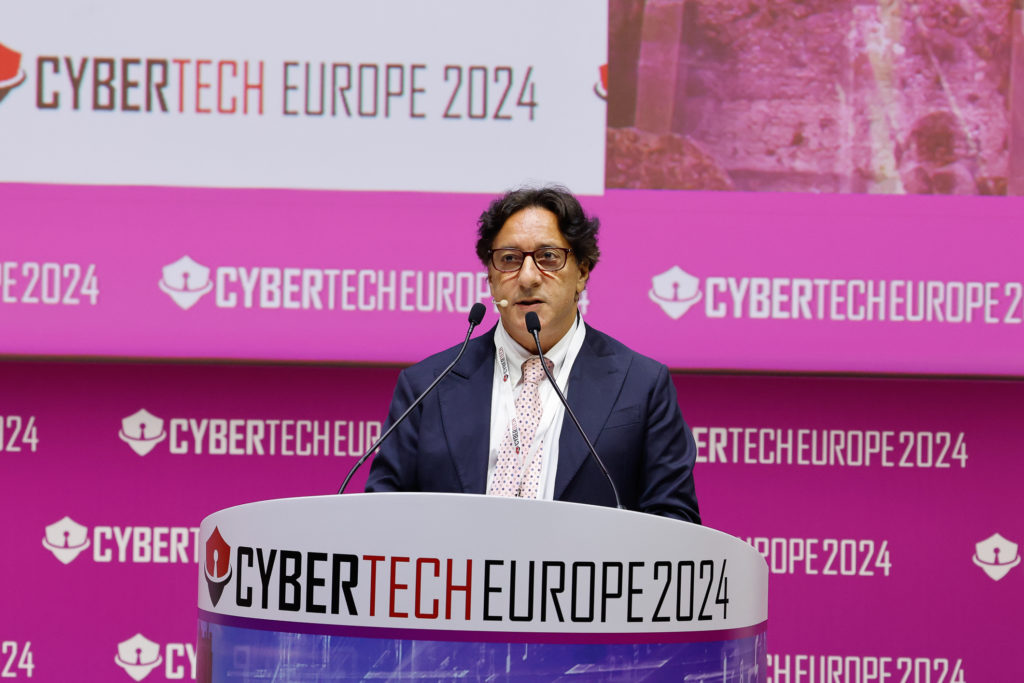
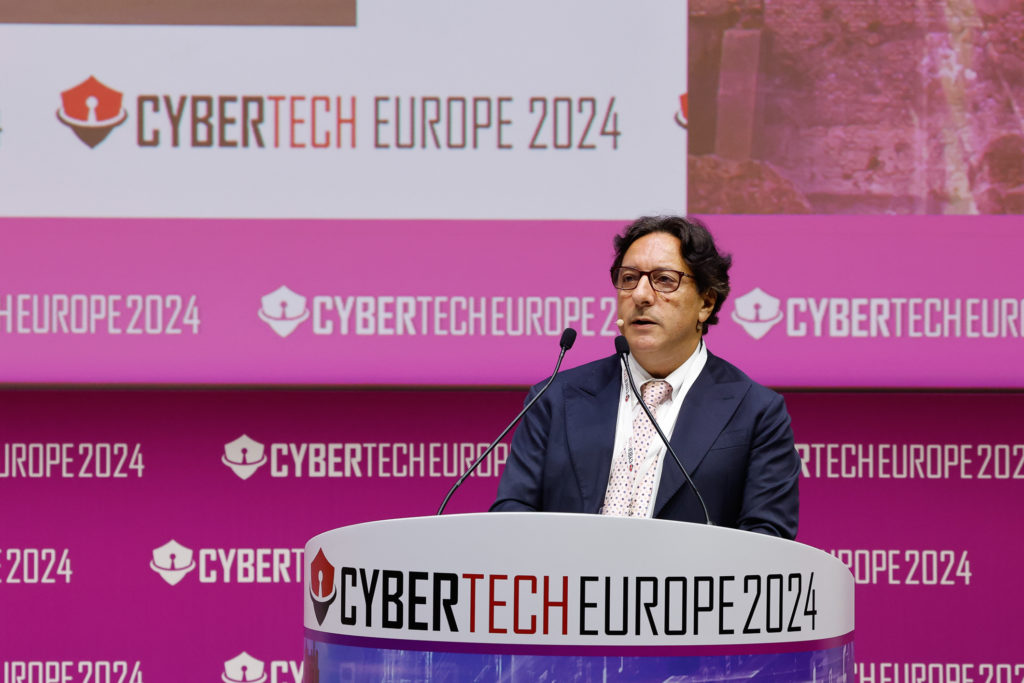
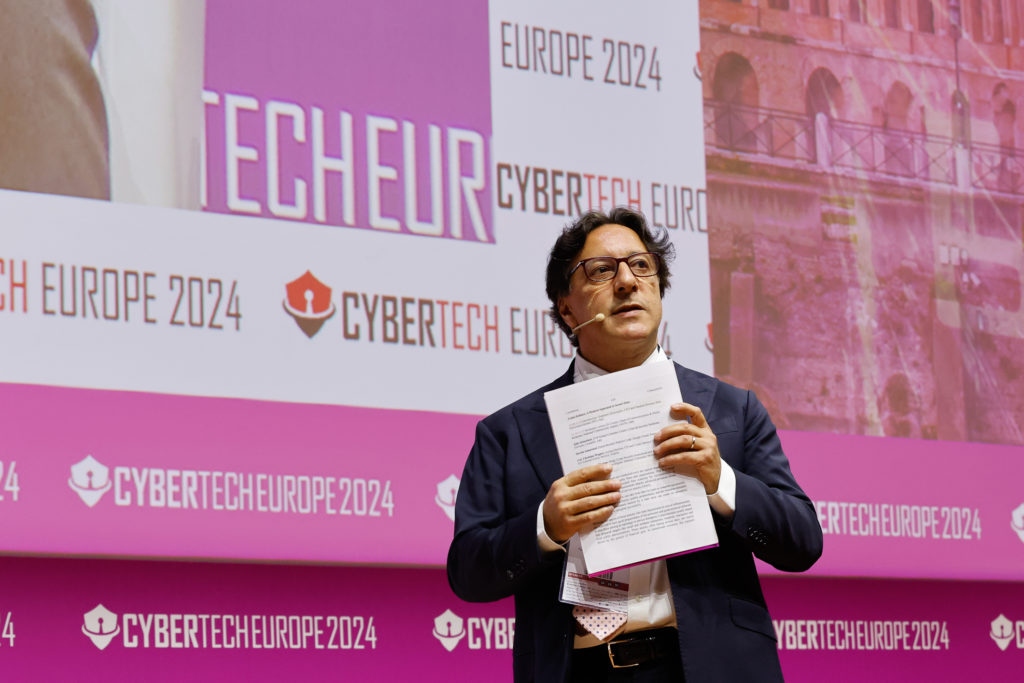
11:00-11:10 Introduction: Gianpiero Strisciuglio, CEO and General Director, Rete Ferroviaria Italiana (RFI), Italy
11:10-11:55 Moderator: Arturo Di Corinto, Head of Communications & Media Relations, National Cybersecurity Agency (ACN), Italy
Aldo Sebastiani, SVP Global CyberSec Center, Cyber & Security Solutions Division, Leonardo, Italy
Davide Annovazzi, Emea Security Practice Lead, Google Cloud, France
Col. Christian Wagner, Acting Director, CIS and Cyber Defence EU Military Staff, EU External Action Service, Austria
Richard Owen-Thomas, Head, Cyber Security Assessment and Advisory Services (CySAAS), Defence Digital, Strategic Command, MoD, UK
—————————————
Millions of attacks’ attempts are conducted every day against targets worldwide according to various cybersecurity entities. This is a broad range of activities, from automated bots scanning for vulnerabilities, to targeted phishing campaigns, ransomware attacks, Distributed denial of service attacks (DDoS), advanced persistent threats (APT).
The kill chain of a cyberattack can take from days to years to complete successfully, depending on the target’s defenses, quality, readiness, and the resources available to the attacker. A cyberattack backed by a state actor can count on substantial resources and time to complete successfully.
However the targets of these attacks, they are expected to have good preparedness of the personnel and good technical defenses to stop those aiming at espionage or service disruption of state departments or critical infrastructures. Cybercriminals usually attack less prepared targets like small and medium enterprises, hospitals, transports and local public administrations. These attacks, often lasting several days, are mainly driven by the pursuit of financial gain. In ransomware scenarios, this typically involves disrupting the target organization’s operations and demanding a ransom to restore them.
Unfortunately, we live in an era of strong political tensions and these attacks, sometimes are politically motivated, preceeding, or following kinetic attacks.
Moreover the actors of these attacks, state-actors, cybercriminals and hacktivist, overlap.
Hence, digital sovereignty faces various threats. A cyberattack on critical infrastructure can compromise a nation’s control over its cyberspace, similar to how a terrorist attack challenges its ability to secure its territory.
Disinformation campaigns on social media can erode trust in national institutions and influence public opinion and decision-making, potentially impacting elections and undermining democracy.
The ways in which digital sovereignty can be undermined are diverse, ranging from technological exploitation, like cyber-attacks, advanced AIs and quantum computers, to non-technical factors like market practices, social engineering, disinformation and others.
How Europe, States and the private sector, is dealing with the most relevant and impacting threats is the topic of this panel.
Infact, as technology develops, new vulnerabilities arise: software vulnerabilities, human vulnerabilities, societal vulnerabilities, economic and trading vulnerabilities. Think of the supply chain attacks.
We live in the new era of DLT, AI, and Quantum computing. Countries are thus aligning to leverage quantum technologies and Al. Furthermore, the constant evolution and blending of these technologies outpace our ability to secure them.
Attacks requiring centuries of computation could now be solved in a short time
To make an example. Apart from the societal benefits and well-being improvements, the development of powerful quantum computers offers a significant strategic geopolitical advantage. The foundation of RSA asymmetric cryptography, which currently safeguards much of Internet protocols and online transaction data (like credit card information), relies on the prime number factorization problem: a BQP problem that can be easily solved by Quantum computers.
This means that we must also be vigilant and proactive in managing the associated multifaceted risks of technological innovation, possibly preventing them. This entails understanding the threats of digital sovereignty and governing such risks through an holistic approach with the aim of maintaining the maximum level of autonomy in an interconnected world.
Nevertheless, digital sovereignty is more than just control and security; it’s about creating an ecosystem conducive to economic growth and innovation. A country with a solid digital sovereignty offers a competitive, secure environment for businesses, fosters innovation, and actively shapes the global digital economy. Therefore, the country’s competitiveness is closely tied to its degree of digital sovereignty, and their combined synergy is crucial for success in the ever-evolving landscape of cyberspace.
It is important to emphasize that cyberspace comprises products and platforms developed by private companies, most of which are more powerful than nation states. In cyberspace, services are both delivered and managed by these private entities.
Consequently, safeguarding digital sovereignty is inseparable from the private sector. For example, it would be impossible to combat disinformation without the cooperation of social networks. Therefore, digital sovereignty necessitates a robust, open and frank multistakeholder collaboration between public and private sectors.
This collaboration escalates to an alliance in times of conflict, and we are here also to talk about this.
(Credits to the author of Charting digital sovereignity, prof. Roberto Baldoni)
L’ottava edizione di ITASEC (https://itasec.it/), l’annuale conferenza italiana sulla cybersicurezza organizzata dal Cybersecurity National Lab. del CINI in collaborazione con l’Agenzia per la Cybersicurezza Nazionale (ACN), si terrà a Salerno dall’8 all’11 aprile 2024, presso il Grand Hotel Salerno.
Alla Conferenza, in presenza, parteciperanno ricercatori e professionisti impegnati nei vari campi della cybersicurezza, provenienti dal settore privato e da quello pubblico, dall’università, dall’industria, dagli enti di ricerca e dal settore governativo.
Tramite il sito https://itasec.it/registration-partecipants/ è possibile iscriversi alla conferenza e ai workshop scientifici di lunedì 8 aprile.
Nella speranza di incontrarci a Salerno, porgiamo i più cordiali saluti.
Il Team del Cybersecurity National Lab – CINI
Arturo Di Corinto (giornalista) ci guida in una conversazione sul libro di Stefano da Empoli (presidente I-Com)
“L’economia di ChatGPT. Tra false paure e veri rischi” (EGEA)
Aperitivo di networking
L’enorme clamore mediatico suscitato dal lancio di ChatGPT e proseguito con il rilascio di altri prodotti in grado di generare in pochi secondi testi, immagini, video e codici ha riportato l’intelligenza artificiale (IA) al centro del discorso dopo alcuni anni di relativo appannamento. Il libro, con un taglio moderato e non catastrofista, narra questa rivoluzione e le sue possibili implicazioni economiche nei prossimi anni e decenni.
Guardando ai benefici ma anche ai rischi e con uno sguardo sia ai profili geopolitici e di politica industriale, sia a quelli della cybersecurity avremo una conversazione con l’autore guidata da Arturo di Corinto noto giornalista, saggista, comunicatore ed esperto di innovazione.
Sarà un momento anche per porci delle domande sulla correlazione tra Intelligenza Artificiale (Aumentata) e Quantum Computing e tra questi e il tema della Sostenibilità Ambientale.
Una presentazione snella e veloce che lascerà spazio, prima e dopo, ad un aperitivo di networking.
Evento riservato, con regola Chatham House, su inviti.
Cyber & Privacy Forum si terrà a Verona il 29 novembre.
Evento organizzato da Ethos Media Group con il patrocinio di Federprivacy con l’obiettivo di aiutare tutti i professionisti che si occupano di proteggere i dati “a parlare una lingua comune”.
Esperti del mondo giuridico e di quello della sicurezza informatica a confronto per parlare della protezione dei dati come un’unica materia. Dalle autorità, attesa la partecipazione di Agostino Ghiglia, Guido Scorza, Riccardo Acciai, e Claudio Filippi del Garante per la protezione dei dati personali. Per l’Agenzia per la Cybersecurezza Nazionale parteciperanno invece Andrea Billet, Arturo Di Corinto, e Stefano Marzocchi. “Privacy e cybersecurity, due facce della stessa medaglia”. Una ricerca per raccogliere i feedback degli addetti ai lavori sui gap da colmare e le possibili soluzioni per facilitare la convergenza.

L’Agenzia per la Cybersicurezza Nazionale ha svolto alcuni seminari alla Maker Faire 2023 alla Fiera di Roma. Il talk di Arturo Di Corinto è stato dedicato al rapporto tra privacy e cybersecurity,
















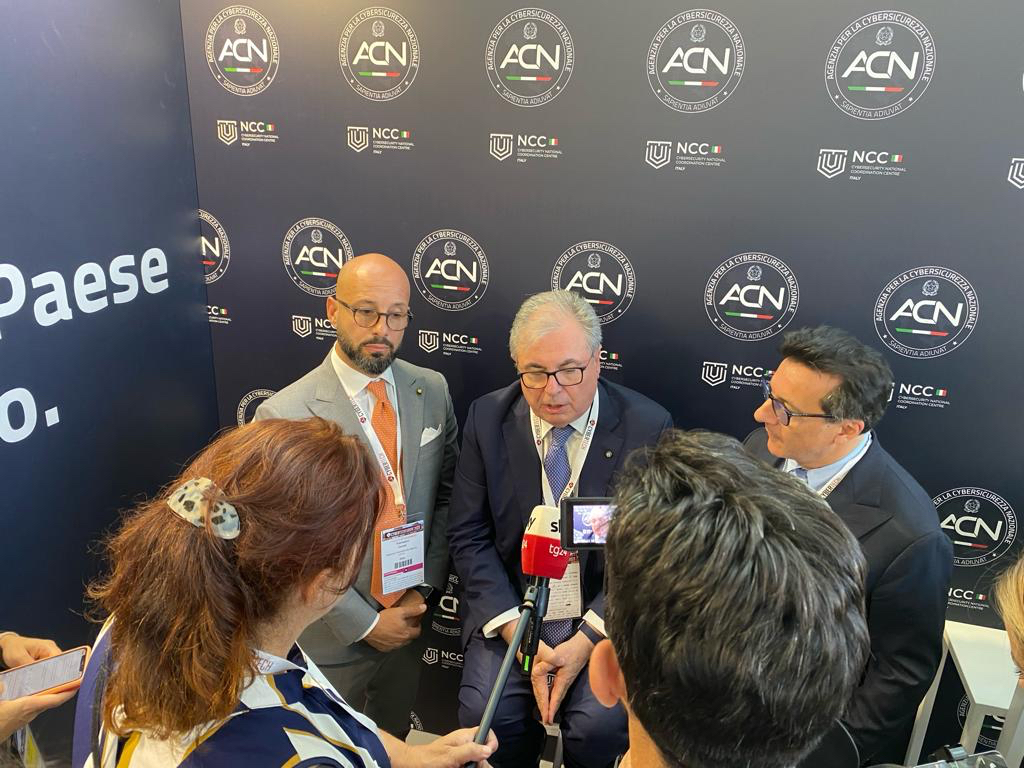







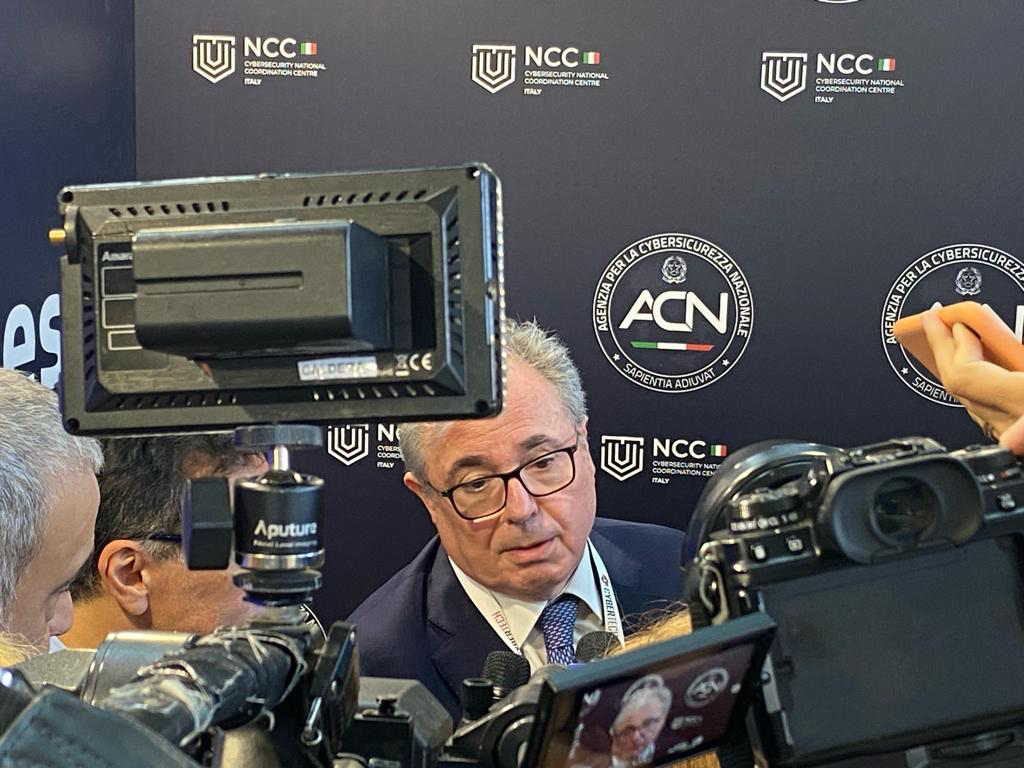

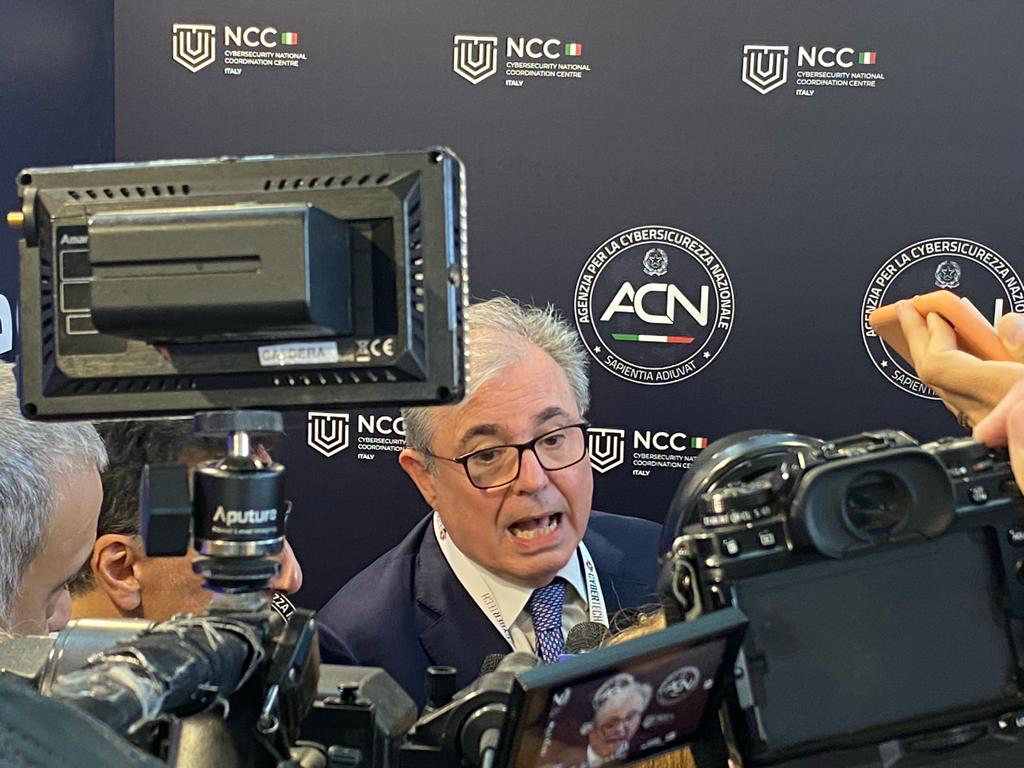
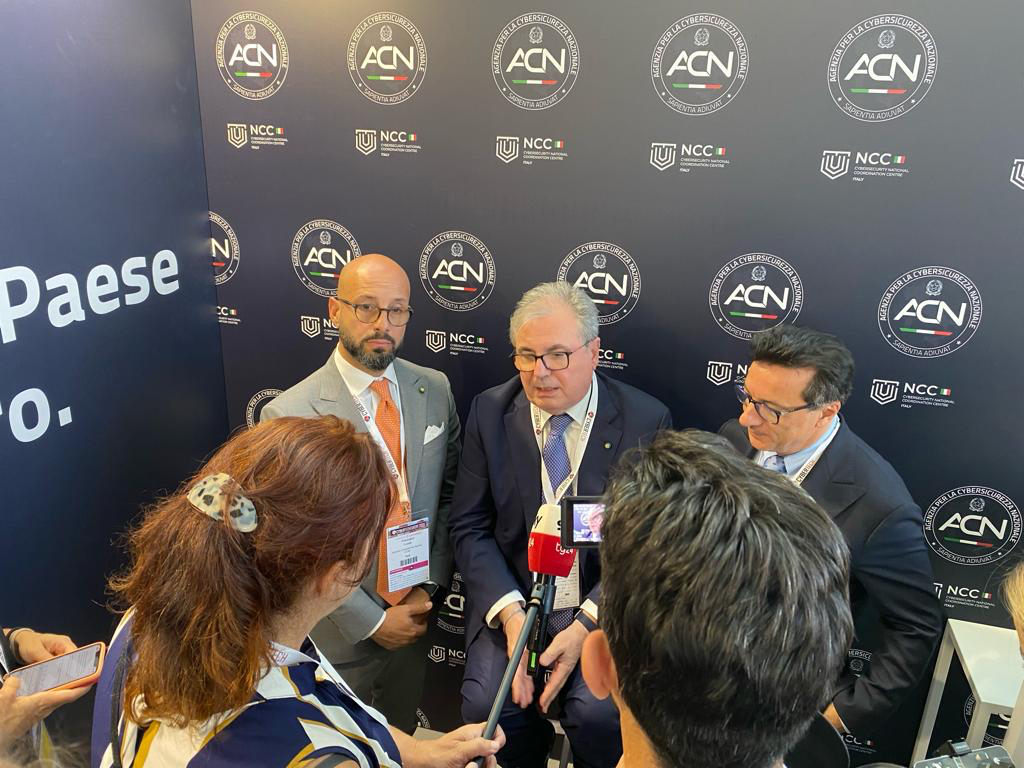
L’Agenzia Nazionale per la Cybersicurezza Nazionale ha patrocinato e partecipato alla Italian Security Conference, ITASEC23 del Laboratorio Nazionale di Cybersecurity che si è svolta a Bari dal 3 al 5 maggio 2023
Nella giornata del 4 maggio ho avuto il piacere di condurre due panel tematici.
Panel – Cyber imprenditorialità: Ricerca e Innovazione
Panel – Prospettive di mercato: i Partenariati Estesi e le nuove imprenditorialità
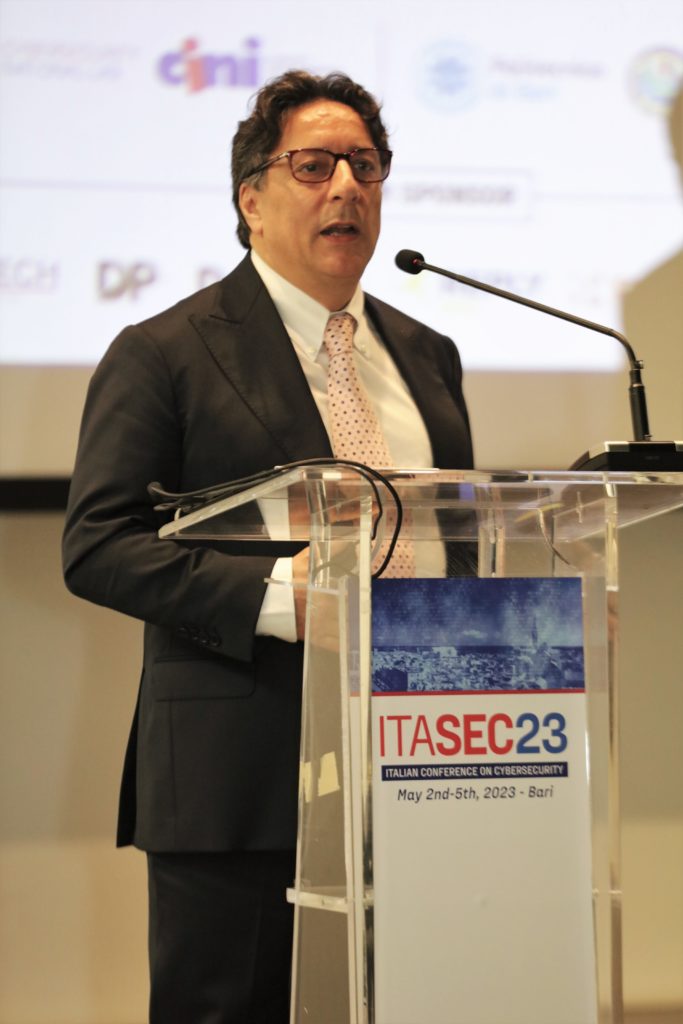
VII° edizione
Torna per la sua settima edizione la kermesse di riferimento del Centro-Sud Italia dedicata ai players di Sicurezza Fisica, Logica ed Integrata. Una piattaforma ibrida di connessione e networking tra industria, pubblica amministrazione, sistema accademico e decision makers per la creazione una vision strategica di settore.
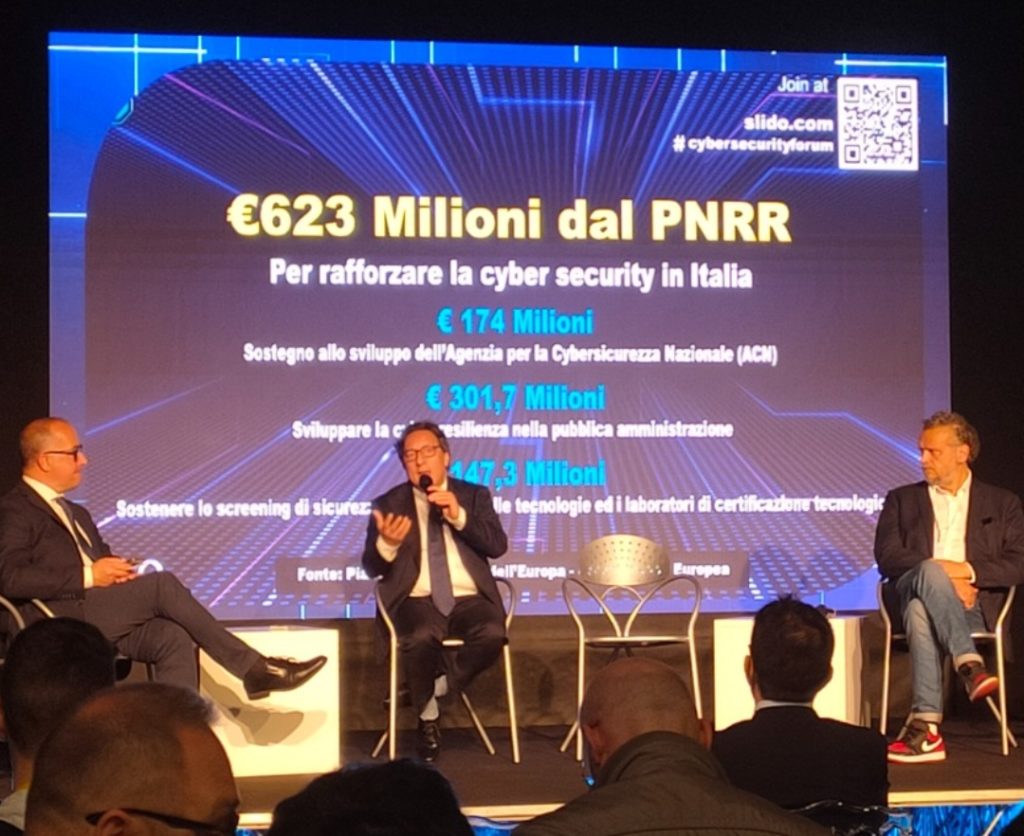
Governance delle piattaforme e diritti fondamentali – 14 Novembre 2022 Sala della Stampa Estera, Roma
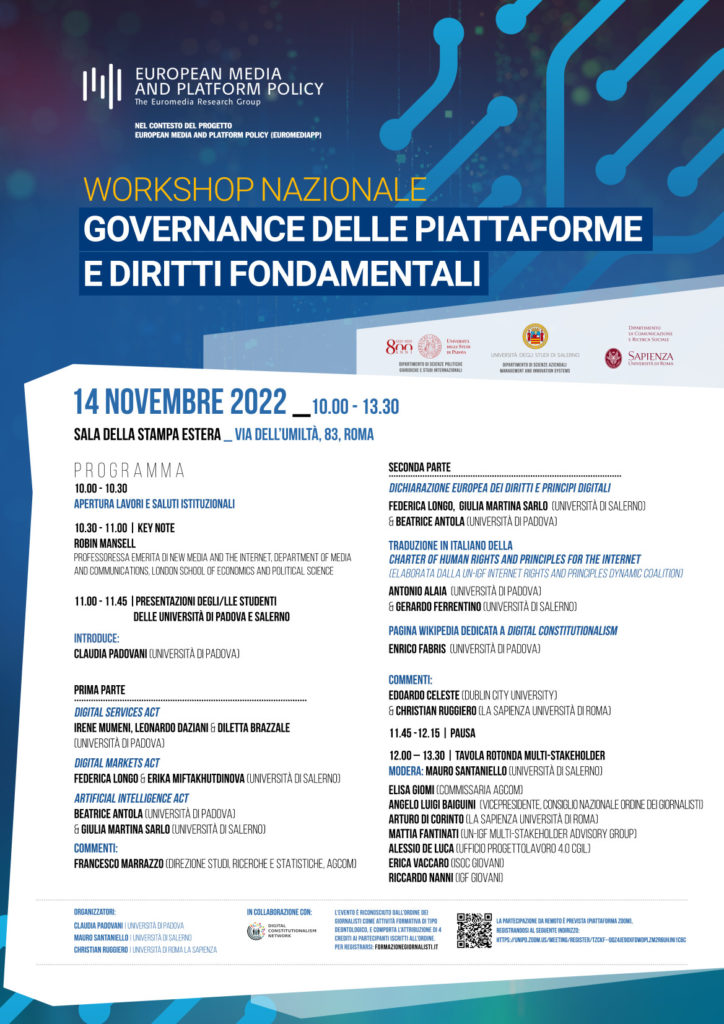
Digital Sovereignty- Work Force Needed
GIOVEDÍ 20 OTTOBRE 2022 – Ore 15 – Centro Studi Americani – Via M. Caetani, 32, Roma
Digital Sovereignty- Work Force Needed
Moderatore: Arturo Di Corinto, Professore
Key note speaker: Roberto Baldoni, Direttore Agenzia Cybersecurity
Vittorio Calaprice, Rappresentanza della Commissione Europea in Italia
Guillaume Poupard*, Rappresentante ANSSI Francese
Emanuele Galtieri, Ceo-Cy4Gate
Stefano Bordi, Direttore Cyber & Security Academy di Leonardo
Le tecnologie dell’informazione e della comunicazione rappresentano la chiave alla modernità per lo sviluppo socio-politico, economico e la sicurezza nazionale, che sta diventando il principale terreno di confronto geopolitico. Gli attacchi cyber sulle infrastrutture sensibili possono essere letali quanto le armi nucleari o di distruzione di massa, e tutto ciò è una realtà completamente nuova.
Sullo scenario di un predominio di alcuni Paesi sviluppati nell’Information Technology e l’emergere di monopoli che controllano le infrastrutture del network, dello stream e dei database, s’intravede una minaccia di una disuguaglianza e supremazia digitale, che da soft power si sta trasformando in hard power.
Per le Nazioni che restano indietro nello sviluppo digitale, i rischi di una perdita graduale e quindi una conseguente distruzione degli elementi strutturali della sovranità statale, accrescono in maniera significativa i rischi di questa trasformazione. La disuguaglianza digitale è infatti una minaccia sempre più tangibile, per la democrazia e per la sicurezza. A causa della disuguaglianza digitale, ogni Nazione ha come priorità lo sviluppo di un sistema di difesa cibernetica, il cui sviluppo necessità di risorse economiche ma soprattutto umane.
Nel settore cyber si profila la creazione di tante nuove opportunità lavorative che non esistevano nel passato e che dovranno essere assunte da giovani professionisti in differenti discipline. Di conseguenza, è fondamentale aumentare le opportunità per la formazione dei giovani e di nuovi talenti sulle tecnologie e le tecniche per la difesa delle strutture sensibili.
Saranno i giovani formati in nuovi corsi di studio a dover tutelare lo spazio digitale nazionale e garantirne il perimetro. La posta in gioco è alta, ma come s’intende agire perché si creino le condizioni perché sempre più giovani intraprendano una carriera lavorativa nel mondo della cybersicurezza?
CODICE CONTRO LA DISINFORMAZIONE
Consegnato ai vertici della Commissione Europea il nuovo codice contro la disinformazione.
E’ una scelta di campo chiara.
In una democrazia compiuta l’Unione attribuisce valore strategico e fondamentale all’informazione verificata e quindi protegge e promuove azioni per contrastare tutto ciò che, non essendo verificato, può alterare il dibattito pubblico.
Il salto di qualità non arriva solo dall’assunzione di questo codice all’interno dei nuovi diritti digitali all’interno del Digital Service Act e dal fatto che si rivolga a centinaia di milioni di cittadini e utenti e che coinvolga le grandi piattaforme e le big tech.
Per la nostra comunità professionale questo codice, quando entrerà in vigore, può determinare l’adozione di buone pratiche finanziate in grado anche di dare una risposta nuova a vecchi bisogni: un ruolo professionale riconosciuto socialmente e pagato adeguatamente sotto il profilo contrattuale.
Presentiamo il #Codice venerdì 8 luglio alle 15,30.
Sarà nostro ospite Oreste Pollicino, professore di diritto costituzionale alla Università Bocconi e membro del Comitato Esecutivo Agenzia Europea per i diritti fondamentali, coordinatore del gruppo di lavoro che ha portato alla scrittura ed elaborazione del Codice
Con lui discuteranno:
Arturo Di Corinto, editorialista di Repubblica e Il Manifesto, docente alla Sapienza di Roma di identità digitale, privacy e cybersecurity
Michela Manetti, professoressa di Diritto Costituzionale Università Roma3
Giuseppe Mennella, segretario di Ossigeno per l’informazione
Maurizio Molinari, direttore di Repubblica
Lazzaro Pappagallo, segretario di Stampa Romana
Arcangelo Iannace, responsabile relazioni esterne Fieg
Modera
Luigi Ferraiuolo, giornalista TV2000
L’evento sarà trasmesso in diretta streaming sui canali Facebook e YouTube di #Stampa #Romana

Sanzioni alla Russia e settore tecnologico: quanto ne sappiamo davvero?
L’Istituto per le politiche dell’innovazione inaugura un ciclo di pillole di approfondimento sull’innovazione. 30 minuti con esperti, per provare a capire qualcosa in più sul mondo che cambia.
Partiamo giovedì 10 marzo alle 19.30 con Arturo Di Corinto, Lidia Iannibelli e Luca Sambucci parleremo di sanzioni alla #Russia e impatto della guerra in #Ucraina nel settore tecnologico.
Qui il link per il collegamento: https://lnkd.in/dvZz8v3d

L’IGF delle Nazioni Unite è finito. E ora che succede?

A conclusione dei lavori dell’Internet Governance Forum in corso in questi giorni in Polonia, Internet Society Italia, organizza – Martedì 21 Dicembre alle ore 18.00 – un’edizione speciale di ISOCaffè per discutere, secondo un approccio informale e dialogico, sulle prospettive del futuro ecosistema di Internet, anche alla luce di quanto emerso a Katowice.
Il dialogo sarà animato dalle riflessioni dei soci Arturo Di Corinto, Vittorio Bertola e Veronica Piccolo – che hanno preso parte direttamente e fisicamente alle attività – per discutere di quanto emerso in questa settimana e di quale sarà l’effettivo futuro della Rete!
Chiaramente, l’invito di interazione è rivolto a tutti i soci che intenderanno condividere il proprio punto di vista.
Non vediamo l’ora di ritrovarci tutti insieme, anche perché ISOCaffè sarà l’ultima iniziativa del 2021, diretta a chiudere un anno intenso dedicato alla promozione della cultura digitale in vista di un 2022 ricco di iniziative, progetti e attività da realizzare!
La puntata sarà registrata e trasmessa in diretta streaming e in tempo reale da Internet Society Italia!
La partecipazione è gratuita e aperta a tutti. Per entrare in trasmissione o seguire la diretta basta cliccare nel seguente link: https://www.isoc.it/node/2624
“It is common knowledge that authoritarian governments censor political and social content in Internet as much as they do in the traditional media.
Mechanisms of online censorship include technical blocking of websites, search result removal, legal take-downs, and induced self-censorship.
Against this background, the IGF defends democratic values that draw upon liberty”
That is why I gave the protesters in favour of platform worker’s rights who ask to ban advertising surveillance, the chance to be heard after they assaulted the stage during the High Level Leaders Panel I was moderating at the Igf conference of the UN in Katowice. The panel, “Creating sustainable value and inclusive society — the role of digital platforms” was meant to discuss freedom of expression, Internet shutdowns, child abuse, cyber-stalking, human rights online.
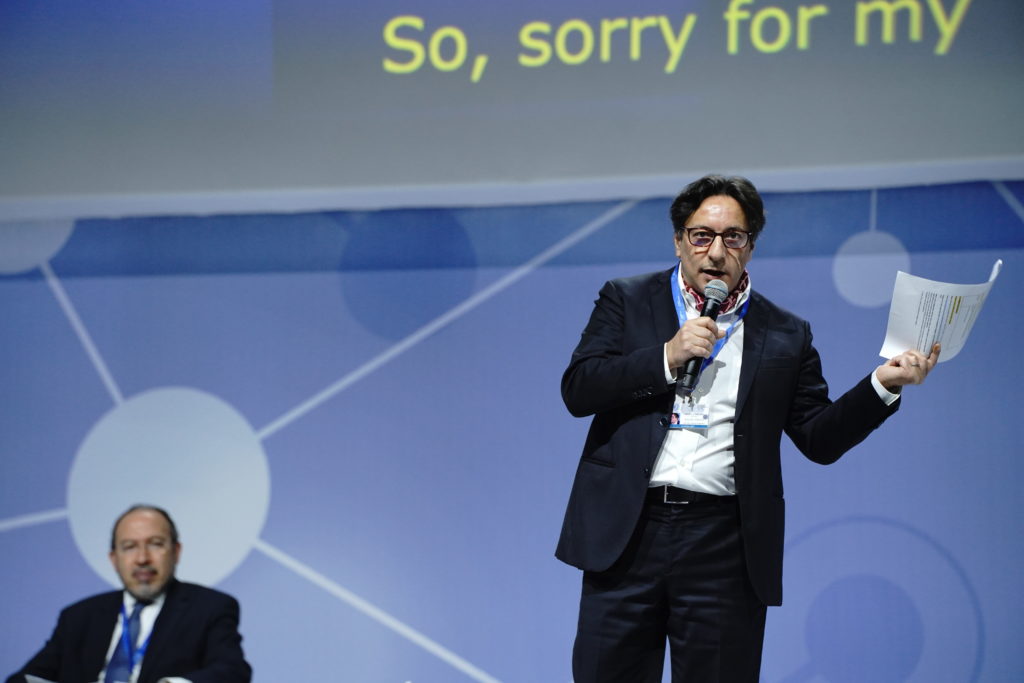
That’s why I take full responsibility for protecting them from arrest and for asking the technical stuff to stream online what was happening.
At the end there were 800.000 registered online participants at the event and they had the right to know.
As additional resource here is a link of a video posted on Twitter
Should have I stopped them? I don’t think so. Please comment.
Seminario: Nuove e vecchie sfide della cybersecurtiy
Martedì 9 novembre 2021, ore 10:15-11:45
Aula G – Dipartimento di Giurisprudenza, Università di Modena e Reggio Emilia – Via San Geminiano n. 3, Modena
Introduzione
Prof. Avv. Gianluigi Fioriglio (Univ. di Modena e Reggio Emilia, CRID)
Prof. Arturo di Corinto (Univ. Sapienza di Roma)
Dott. Daniel Rozenek (Tekapp S.r.l.)
Ciclo di seminari per l’a.a. 2021-2022 della
Officina informatica su “Diritto, Etica, Tecnologie” (DET)
CRID – Centro Interdipartimentale su Discriminazioni e vulnerabilità
“Dalla ricerca all’impresa”
in collaborazione con il
Dottorato di ricerca in Scienze giuridiche
Corsi di Informatica Giuridica e Didattica del Diritto e Media Education
(Prof. Gianluigi Fioriglio)
Phishing e Business Email Compromise: Nuovi strumenti per affrontare le frodi online
Modera
Arturo Di Corinto, giornalista e professore di Identità digitale, Privacy e Cybersecurity presso l’Università La Sapienza di Roma
Scenario e trend sugli attacchi via email e principali driver per la protezione
Interviene
Marco Di Luzio, Chief Marketing Officer, Tinexta Cyber
Tavola rotonda
Case study, best pratice e strumenti per la collaborazione digital sicura
Intervengono
Romano Stasi, Direttore Operativo, CERTFin
Mauro Conti, Professore Universitario Gruppo SPRITZ, Università di Padova
Marco Ramilli | Founder & CEO, Yoroi
Pierguido Iezzi | CEO & Cybersecurity Director – Swascan
Alberto Da Pra | Presale and Market Development Manager – Business Unit Cybersecurity – Corvallis
Tra i contenuti chiave del webinar,
Per l’occasione Yoroi, società del polo Tinexta Cyber, illustrerà un servizio di protezione delle email certificate che utilizza strumenti specializzati come la sandbox Yomi, una tecnologia inglobata nell’ecosistema di VirusTotal. La sandbox è in grado di “detonare” elementi informatici malevoli e di renderli innocui per l’utente prima di aprire la posta elettronica.
Scopri di più sullo European Cybersecurity Month
Ti aspettiamo!
ReWriters fest: Realtà aumentata, intelligenza artificiale, onlife: tra limiti e possibilità, ripensiamo il rapporto tra umanità e macchina, social media compresi
16, ottobre 2021
Roma, WEGIL, Largo Ascianghi 5
Con il Patrocinio della Regione Lazio e di Roma Municipio I Centro
L’ingresso è permesso solo con Green Pass
-Ore 17.00-19.00, Androne, Tavola rotonda–
Prenota qui
“Realtà aumentata, intelligenza artificiale, onlife: tra limiti e possibilità, ripensiamo il rapporto tra umanità e macchina, social media compresi”, a cura della giornalista di Online News Association (ONA) Rosa Maria Di Natale, Premio Ilaria Alpi 2007, founder di Data Journalism Crew, per il quale ha vinto il Premio Donnaèweb 2012, e del team EmPress media e News, sul Social Journalism
Intervengono:
Arturo Di Corinto, professore di Identità digitale, privacy e cybersecurity presso la Sapienza di Roma, associato senior presso il Center for Cybersecurity and International Relations Studies dell’Università di Firenze;
Alberto Del Bimbo, professore ordinario di Sistemi di elaborazione delle informazioni all’Università di Firenze, già direttore del Centro di Eccellenza MICC (Media Integration and Communication);
Tiziana Catarci, direttrice del Dipartimento di Ingegneria Informatica, Automatica e Gestionale dell’università La Sapienza e Editor-in-Chief dell’ACM Journal of Data and Information Quality (JDIQ);
Maria Chiara Parmiggiani, avvocata esperta di cyberbullismo;
Stefano Zordan, co-founder di Adriano Olivetti Leadership Institute;
Davide Bennato, professore all’Università di Catania in Sociologia digitale, co-founder diSTS-Italia Società Italiana di Studi su Scienza e Tecnologia;
Marco Scialdone, PhD, docente Università Europea, esperto di diritto dell’informatica e fellow IAIC (Accademia Italiana del Codice Internet), autore del recente “Vivere con l’intelligenza artificiale”;
Federico Badaloni, giornalista, architetto dell’informazione, responsabile Area progettazione della divisione digitale di Gedi;
Alessio Jacona, curatore dell’Osservatorio Intelligenza Artificiale ANSA;
Cristiano Boscato, direttore didattico alla Bologna Business School di AI per il business e founder di Injenia, top leader italiana in machine learning e intelligenza artificiale.
Webinar – 14 ottobre ore 17.00
Evento gratuito ad iscrizione obbligatoria
All’evento organizzato da IMQ Associazione, partecipano:
Giuseppe Busia (Presidente ANAC),
On. Vincenza Bruno Bossio (IX Commissione Parlamentare – Trasporti, poste e Telecomunicazioni),
Eugenio Santagata (CEO Telsy – Gruppo Telecom),
Yuri Rassega (Chief Information Officer ENEL)
Maria Antonietta Portaluri, Presidente IMQ Associazione e Direttore Generale ANIE
Modererà l’incontro Arturo di Corinto, giornalista e professore
Si terrà il 27 settembre a Roma il workshop dal titolo ‘La cybersecurity non è un processo ma un ecosistema’, organizzato da ATLANTICA DIGITAL SPA e sponsorizzato da IBM.
Tema dell’evento sarà la cybersecurity intesa come cultura diffusa di approccio e gestione del rischio di attacchi, con particolare attenzione al ruolo delle aziende e dei fornitori nel “fare filiera”.
Un argomento di grande attualità, in un contesto di crescente consapevolezza dei rischi legati al mondo cyber da parte delle aziende.
Il workshop, che sarà in modalità ibrida (relatori in presenza, pubblico in streaming), si terrà dalle ore 11:00 alle 13:00. Il link per lo streaming sarà diffuso nei prossimi giorni.
AGENDA
Corradino Corradi, Head of ICT Security, Privacy & Fraud Management, Vodafone
Vincenzo Di Nicola, Head of Technological Innovation and Digital Transformation, INPS
Massimo Ravenna, Head of Cyber Security, Acea
Luigi Maracino, General Manager, Atlantica Cyber Security
Giulia Caliari, Security Architect, IBM
Modera: Arturo Di Corinto
Richmond Cyber Resilience Forum
GUBBIO Park hotel ai Cappuccini 5 – 7 SETTEMBRE 2021
È uno dei temi di maggiore attualità, che coinvolge singoli individui e aziende. Perciò abbiamo dedicato alla Cyber security un forum, con nuovi strumenti di formazione e business.
È un momento di incontro tra la domanda e l’offerta di prodotti, servizi, soluzioni e progetti che coinvolgono i responsabili delle scelte informatiche e tecnologiche delle aziende italiane.
Cyber Resilience forum è un evento a porte chiuse, con una selezione rigorosa dei partecipanti che ne garantisce la qualità.
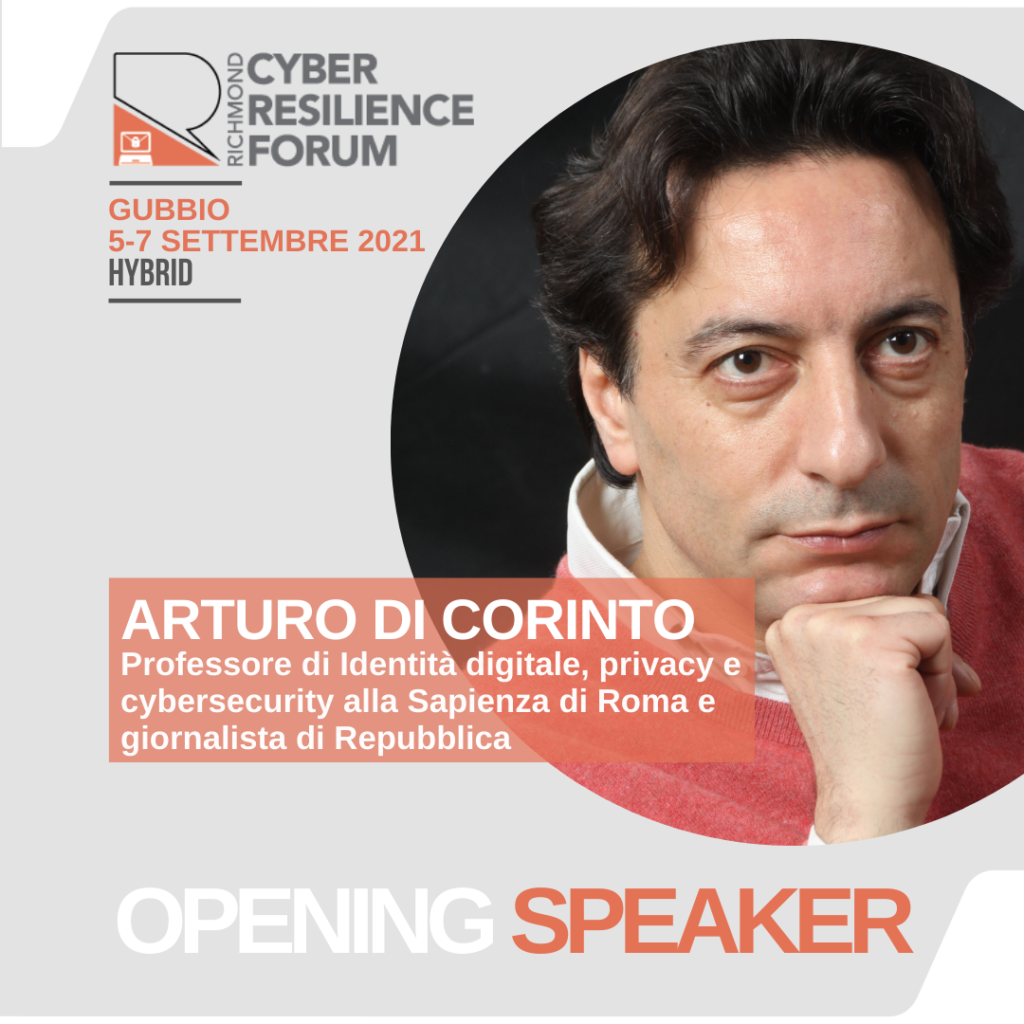

Convegno ABI “Banche e Sicurezza 2021” – 25 e 26 maggio – Sessione di Apertura
I lavori si apriranno martedì 25 maggio alle ore 9.30 con la Sessione Plenaria “La Sicurezza dell’innovazione”, moderata da Arturo Di Corinto de La Repubblica
COME VALORIZZARE I PROPRI CONTENUTI COME DIFENDERE LA PROPRIA PRIVACY: LA POPOLARITA’ IN RETE
In questo seminario affrontiamo il tema della “popolarità” in Rete guardando alle due facce della stessa medaglia.
Da un lato, con Ugo Esposito e Daniele Calabrese (esperti di Kapusons, azienda specializzata anche in analisi di sentiment social e big data) impariamo tecniche, consigli e strategie per dare visibilità ai propri contenuti ed evitare che il nostro lavoro “si perda” in Rete e sia meglio individuabile da chi naviga in Rete e, potenzialmente, è interessato ai nostri articoli, ai nostro prodotti, ai nostri contenuti in genere.
Dall’altro lato, con Arturo di Corinto, anche attraverso pochi e semplici consigli, impariamo come sottrarsi alle tecniche – in particolare dei grandi “raccoglitori” di dati – che mirano a “profilare” gli utenti e a conoscere tutto di noi.
—-
Venerdì 7 maggio ore 2pm
—-
DOCENTI
Ugo Esposito
Daniele Calabrese
Arturo Di Corinto
—-
